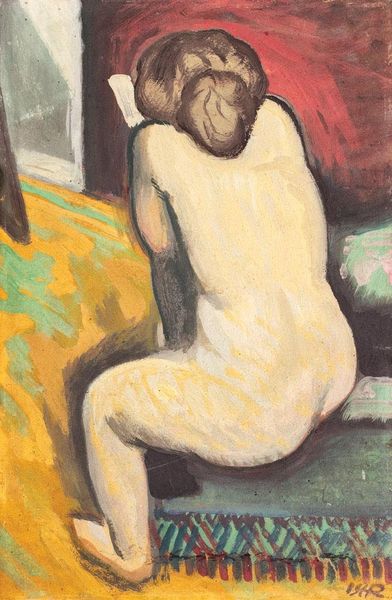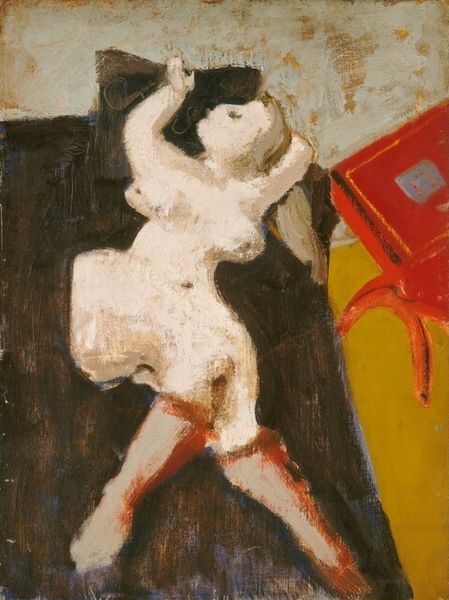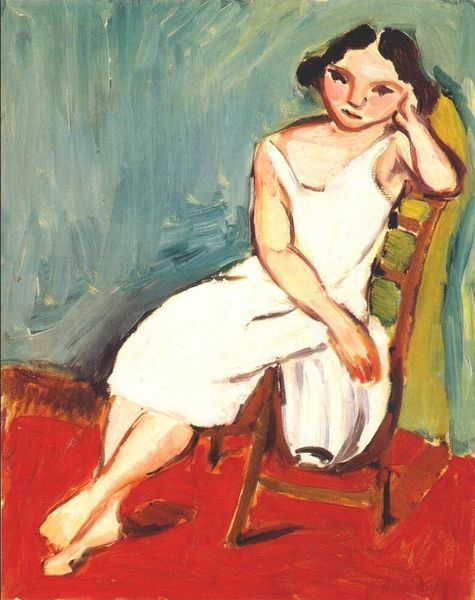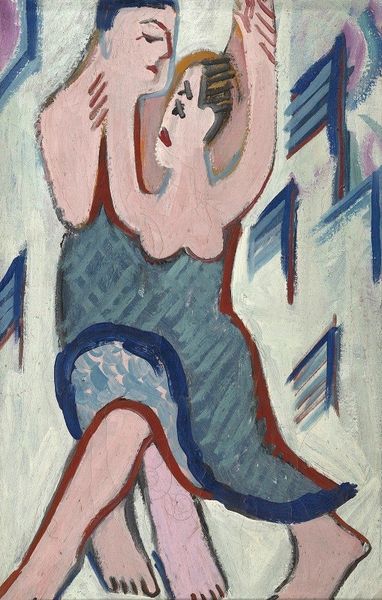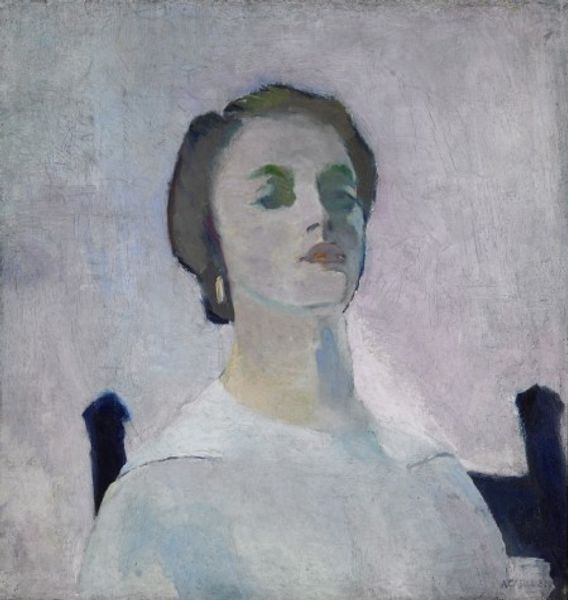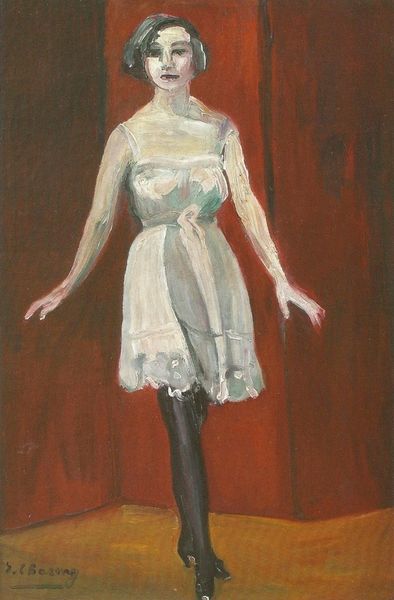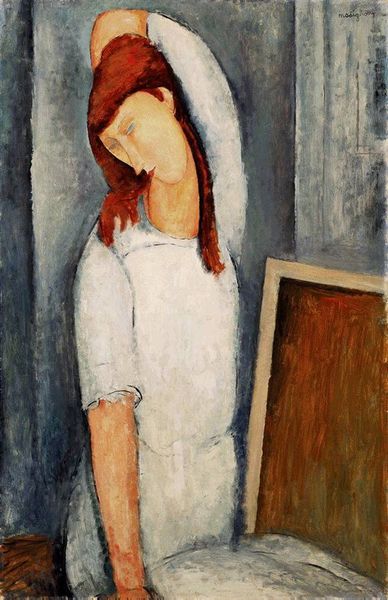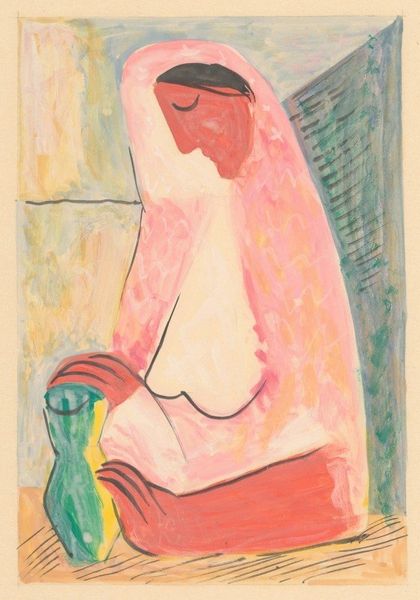
Copyright: Henri Matisse,Fair Use
Editor: Here we have Henri Matisse’s oil painting, "Young English Girl," created in 1947. What strikes me immediately is the simplification, the facelessness of the figure. How are we meant to read this absence? Curator: It's a powerful reduction, isn’t it? The missing face forces us to look beyond the representational, and deeper into the symbolic weight of the colors and forms. Consider the fiery red backdrop – what does that evoke? And the cool white of her dress? It is not just about portraying this specific young woman. Instead, Matisse seems to be using her as a vessel. Editor: A vessel for what, exactly? Is she a symbol of youth? Innocence? The red seems to be vibrating against the white. Curator: Perhaps. The red can represent passion, energy, even danger, a stark contrast with the perceived purity and promise often associated with white. But look closely. Is it *pure* white? Or is there a subtle blending with pink, an allusion to her body under the white fabric of the dress, further emphasized with that almost cartoonish shadow cast down the central portion of the work? What might *that* be alluding to, psychologically? Editor: That's a very interesting question about innocence and sexual identity, given her shadow and clothing and her obvious presentation of youth, as this figure exists right on the cusp of change. Thank you, this has provided a way into the rich symbols of this amazing work! Curator: Precisely. Every choice, even the apparent omissions, tells a story. It's about feeling, about engaging with these images on an instinctual level. It’s like the figures existing in a timeless psychic landscape. Editor: That definitely reframes how I see the whole piece now!
Comments
No comments
Be the first to comment and join the conversation on the ultimate creative platform.

